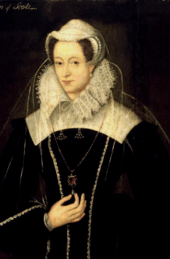Inside A Renaissance Painter’s Studio
In 1510, the year in which my new novel The Colour Storm is set, nearly every great painter of the age was actively at work. Michelangelo, Leonardo, Bellini, Titian, Raphael, Dürer, Hieronymous Bosch and, the principal of my story, Giorgione. It’s incredible to think these painters were competing for the same commissions, knew each other, often very well, as one frequently worked with, or indeed, for another. Bellini taught Giorgione, who in turn trained Titian; while Michelangelo and Raphael collaborated in Rome – though rather against their wills! In that era, painters were becoming celebrities for the first time, welcomed into high society and – the lucky few – able to earn fortunes.

The Tempest by Giorgione
Renaissance artists were not born with the ability to paint incredible masterpieces; they needed to be trained. There were no formal institutions, as there were for law, medicine and mathematics. Instead, all aspiring painters, without exception, learned under the watchful eye of a master painter in a workshop, or bottega. The length of training varied depending on each youngster’s work ethic, natural talent and character. Even the most gifted, rising to the calibre of a Michelangelo, trained for three intense years, in the shadow of their master, gaining insight, learning a thousand techniques and tricks of the trade.
Many apprentices stayed for ten, even fifteen years, and often in the face of personality conflicts and family disapproval. To give an idea of how manic and thriving the world of the bottega was, there were at least 60 large ones in Florence alone, a great number in Venice too, with 50 or so apprentices apiece, each practising with a single goal: providing artistic beauty to anyone rich enough to buy.
It was a place of intense work and frenetic energy from dawn until dusk. The completing of a commission, perhaps a large painting for a client, compelled everyone to work closely and in concert. Each apprentice, or garzoni, had a specific assignment: it might be cutting and gluing frames, preparing canvases, grinding paint, mixing tempera, formulating gesso, blending oils or distilling varnishes; along with more menial tasks of fetching supplies, unloading materials, erecting scaffolding, sweeping, cleaning and cooking.
There might be a team of people whose only task was to use ermine tail or hog skins to manufacture brushes. There would be the constant sound of saws grinding, canvas shearing and hammers pounding; whilst heady smells filled the air: crushed minerals, raw pigments, flowers, linseed and ground bone.

Self-portrait by Titian
The work of the garzone didn’t stop with whatever painting was being made. They would be expected to use any spare time to absorb geometry, perspective, mathematics and anatomy. They would make copies of masterpieces, both from renditions owned by studio and from the real thing outside. They would go off to draw architectural treasures, or sketch unknowing models to capture humans in motion. There would be almost constant life-drawing in the bottega, using either paid models, or taking it in turns to pose for each other, or simply – when studying how light and shadows play across human form – from statues and plastercasts.
To go even deeper into anatomy, to understand the mechanics of muscle definition, skin texture, veins, bones structure, some masters brought human corpses into the workroom to be cut open and sketched. There was a rumour that Michelangelo spent so much time with the dead that his gut was in almost constant revolt.
The manufacture of colour was perhaps one of the most exciting enterprises a garzoni could be tasked with. Indeed it was learning about this secret world of colour that first inspired me to write The Colour Storm, in which a new mineral has arrived in Venice and every painter in Italy is vying to be the first to track it down.
In the Renaissance, and later, pigments had firstly to be found. Colour comes from minerals – cobalt, azurite and lapis for blues, malachite and verdigris for green, porphyry and hematite for reds – but from vegetation too. Berries, roots, flower petals and vines all contain distinct hues, while saffron produces yellow, red-pepper seeds burnt red, and almond and peach stones shades of black. Sometimes garzone would be sent to the country, to collect insects or dig colour from the earth, or to the seaside to grub for molluscs. Tyrian purple was derived originally from a particular shell found on shores of that ancient city. When the materials have been found and brought back, the grinding begins, with pestle and mortar first, then on slabs with stone rolling pins, and finally on glass until the powder is ready to mix into paint and be applied.
A renaissance painter’s studio was a breath-taking, extraordinary world within a world, a place of intense learning, of enquiry and examination, of skill and relentless hard work. They were fine tuned engines. Within them, the universe, humans, and world they inhabit, were studied, understood and rendered back in new, thrilling forms. Like the film studios of today, they were dream factories of fantasy and beauty.
It is no surprise then they produced perhaps the most astonishing artists and art the world has ever known.
The Colour Storm by Damian Dibben is published by Michael Joseph and is out now.
Aspects of History Issue 10 is out now.







